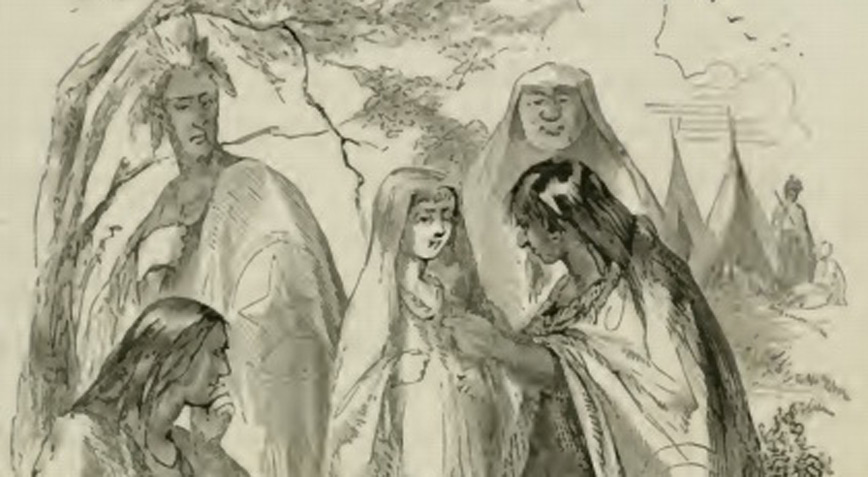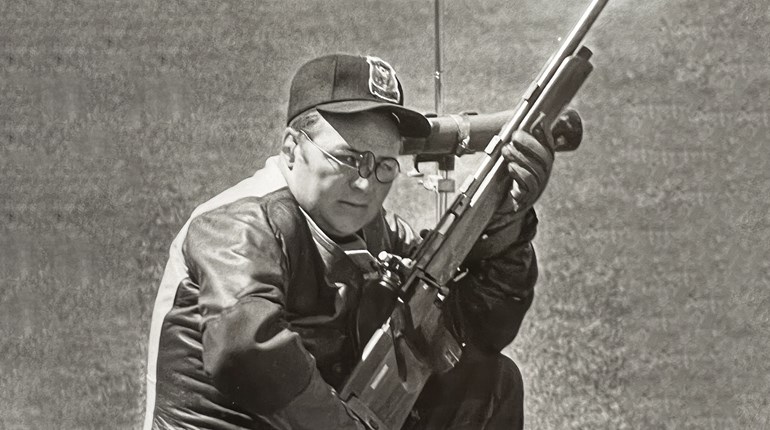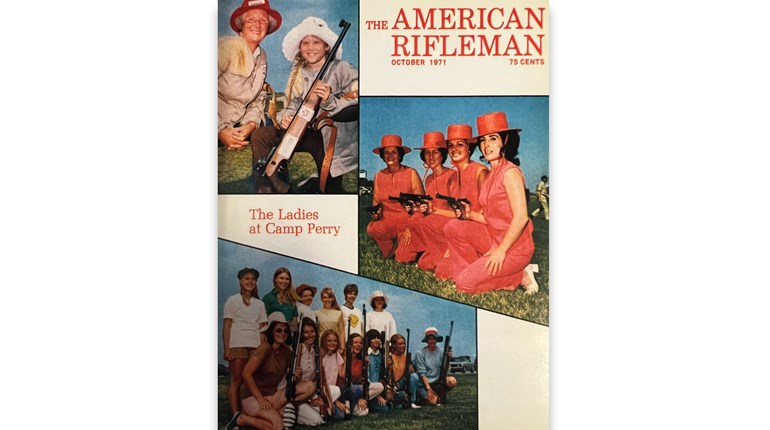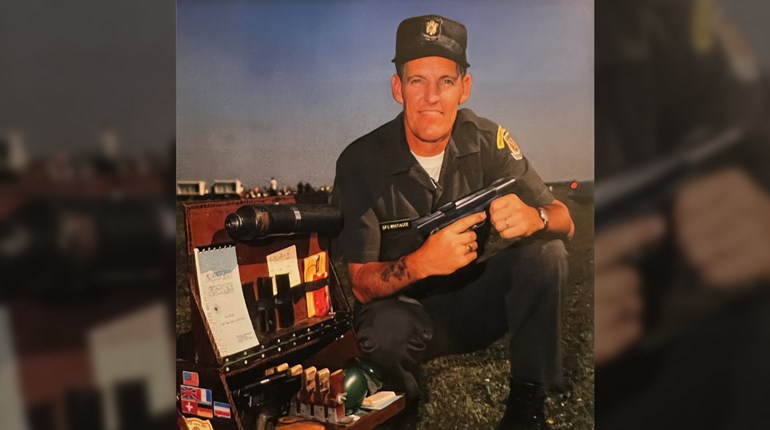
It is seldom during our modern era that we have the opportunity to hear an authentic, first-hand account of life on the American frontier from more than 250 years ago. The Eastern wilderness was a place of great beauty—virgin forests, rushing rivers, untold numbers and species of wildlife—yet it was also a place of great danger. Life was difficult and death lurked around every bend in the trail.
A white woman who not only lived in that wilderness for 90 years but thrived there was Mary Jemison (1743-1833). Late in life, she sat down with minister Dr. James Everett Seaver in November, 1823, over a three-day period, and related her entire life’s story. The interview was published as a book a year later—Narrative of the Life of Mrs. Mary Jemison—from which most of the following information was taken. Her account is one of the most fascinating frontier tales ever recorded.
The daughter of a Scots-Irish couple, Mary Jemison was born aboard the sailing ship William and Mary while crossing the Atlantic Ocean, her parents in search of a new and better life in America. Arriving at Philadelphia, Mary’s father soon moved his wife and family—Mary was one of six children—west to the central Pennsylvania frontier in search of cheaper land to farm.
All went well for several years, with Mary describing her bucolic life and that of her parents. “Peace attended their labors; and they had nothing to alarm them, save the midnight howl of the prowling wolf or the terrifying shriek of the ferocious panther...our mansion was a little paradise.”
But it was not to last. During the French and Indian War, in the spring of 1755, a raiding party of six Shawnee warriors accompanied by four Frenchmen struck the Jemison homestead. Captured were Mary, her parents, her sister and the younger two of her four brothers; as well as another woman and her three children who happened to be living with the Jemisons at the time. The woman’s brother-in-law was shot dead during the attack.
The raiding party quickly plundered the house then was soon on its way with prisoners in tow, hurrying to get back into the woods before being detected. Mary remembered, “…an Indian went behind us with a whip, with which he frequently lashed the children to make them keep up. Whenever the little children cried for water, the Indians would make them drink urine or go thirsty.”
On the second evening of their captivity, the group came to the edge of a swamp and the Indians halted the forced march. One warrior took young Mary aside, removed her shoes and stockings, then put moccasins on her feet. He also did the same to one of the young boys, but no one else.
Mary’s mother immediately sensed what was happening. She knew instinctively that only Mary and the boy would be taken on to the Indian towns. The rest of the whites would be slaughtered. Mary remembers her mother saying, with tears in her eyes, “I fear that the time has arrived when we must be parted forever. Don’t forget, my little daughter, the prayers that I have learned you—say them often.”
A warrior then took Mary Jemison and the boy by the hand and led them deeper into the woods, where the three of them lay down and spent the night. The next morning, the other Indians and the four Frenchmen reappeared, but without the other captives. After a third hard day’s march the Indians stopped again, made camp, and after eating pulled bloody scalps from their pouches and began stretching them over willow hoops to dry. Mary immediately recognized the scalps as being those of her family and friends.
About a week later the Indians arrived with their young captives at Fort Duquesne—today Pittsburgh, Pennsylvania. There Mary was given to two Seneca Indian sisters who had recently lost a brother in battle. The Senecas placed Mary in a canoe with them and proceeded down the Ohio River many miles to their village where Mary was formally adopted into the tribe.
The Indian tradition of adoption seems very strange to us today. Imagine travelling hundreds of miles on foot, then taking captive by force someone from another race, culture and language. And to make good your escape, you may have to kill members of their immediate family. Then you take that captive back to your home and formally adopt the person into your own family, showing him or her the same love and respect you would shower on your closest relatives.
As unbelievable as that scenario sounds, such was the custom of many Native American tribes living in the Ohio country during the late 1700s. Captives—both white and black—were taken by the Indians to replace family members killed in war or who had died of sickness or other causes.
Mary was a young teenager when adopted, the two Seneca sisters showing her great kindness. Short in stature with light-blue eyes and light chestnut-brown hair, Mary was given an Indian name (De-he-wa-nis) which translated means: a pretty or handsome girl, or a pleasant, good thing.
“I was very fortunate in falling into their hands,” Mary said, “for they were kind, good-natured women; peaceable and mild in their dispositions; temperate and decent in their habits, and very tender and gentle towards me.”
Mary spent the next few years living in the village during the summer and travelling by canoe farther downriver to the Indians’ hunting camp at the mouth of the Scioto River each winter. She eventually married a Delaware warrior who was also living in the village, by which she had a daughter that died only a few days after birth. Two years later the couple had a son that Mary named Thomas, after her father.
Older than she, Mary’s husband eventually sickened and died, leaving her a young widow with a young child to provide for. It was at this time in her life that she and her extended Indian family moved to the Genesee River region of New York and she married her second husband.
Hiokatoo was a highly-respected Seneca warrior and leader, and his fame would only increase during the nearly 50 years Mary was married to him. The couple had six children—four daughters and two sons—with Hiokatoo living to be more than 100 years old.
Through the years, Mary Jemison became so well liked and respected by the Seneca that twice she was given permission to leave the Indians and return to white society if she so chose. Both times she refused, and the Seneca Nation was so pleased with her desire to stay that she was rewarded with many acres of land.
Unfortunately, Mary’s latter years were marred by family tragedy. Liquor had been introduced to the Indians by white traders and its effects were devastating. Three of her adult sons were killed under the influence of alcohol. Her son John killed both his older half-brother, Thomas, and his younger brother, Jesse, before he, too, was killed by two other Indians.
Of the effects of alcohol or “ardent spirits” as Mary called them, she predicted they were “…a poison that will soon exterminate the Indian tribes in this part of the country, and leave their names without a root or branch.”
Mary Jemison died at 90 years of age. Only three of her eight adult children were still living when she gave her now-famous 1823 interview. However, she left 39 grandchildren and 14 great-grandchildren when she passed. Mary Jemison’s grave is today located in western New York’s Letchworth State Park.
Some of Mary’s last words were, “I expect I shall soon leave the world…I feel the weight of years with which I am loaded. If my family will live happily…I feel as though I could lay down in peace a life that has been checked in almost every hour, with troubles of a deeper dye, than are commonly experienced by mortals.”






































